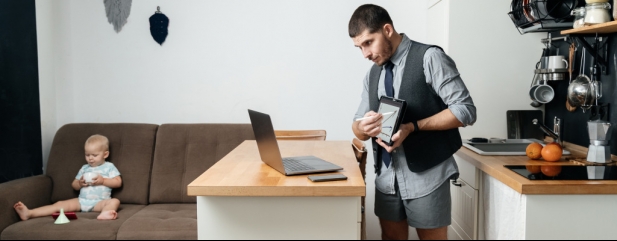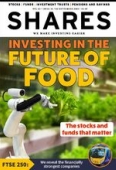Archived article
Please note that tax, investment, pension and ISA rules can change and the information and any views contained in this article may now be inaccurate.
Has Covid changed the world of work forever?

The start of the new school year is traditionally the time that offices, which languished half empty over the long summer holidays, are suddenly bustling with life. Lunch dates are made, career catch ups scheduled and goals recalibrated. Covid threw everything up in the air and everybody’s watching to see where the pieces will eventually settle.
As of 19 July, the Government’s work from home guidance has been withdrawn but unlike last year it’s not been replaced with public calls for a swift return to the office. Businesses are being left to set their own agenda and many are in no hurry to issue that particular call now.
Perhaps it’s the uncertainty of what the autumn might bring and how the Delta variant might feature. Perhaps it was the timing, coming just at the start of the summer holiday season but Freedom Day didn’t spark the mass return of the white-collar worker.
In fact, company after company has been lining up to announce plans to embrace the hybrid work model on a permanent basis. Some, like BP (BP.) and KPMG have said they do expect employees to sit at their desks for at least a couple of days every week, others like Deloitte and most recently Premier Foods (PFD) have said people should make their own decision about where they work best.
WHO WINS IN THE SWITCH TO HYBRID WORKING?
After years of half-finished discussions about the pros and cons of a flexible workforce the pandemic forced change and for many the change has been good. Employers are eyeing the potential savings they can make on building costs and many employees have found a new work life balance that they’re loathed to give up.
There will be losers, not least businesses in our towns and cities that rely on office trade. With footfall repressed spend is a fragment of what it was before the first lockdown and it seems unlikely it will ever return to what it was. Investors would love a crystal ball, a glimpse into the future. Past performance can’t quite oblige but it does give us an indication of how markets have sized up the direction of travel.
Cast your mind back to that first lockdown, the surreal full stop to everyday life. Very few businesses escaped a drubbing as people were told to shore up in their homes, only travelling if work was considered vital for the country to keep ticking over.
Streets were suddenly empty and share prices tumbled as investors adjusted their portfolios, seeking out growth in the few sectors that suddenly became very busy. IT infrastructure provider Softcat (SCT) helped firm after firm set up secure, cloud-based solutions so their business could continue from kitchen tables and bedrooms. Similarly, Mitie (MTO) kept essential workspaces clean and secure.
Homeworking was expected to be a blip, a temporary experiment that would be remembered fondly at the next Christmas bash. By May many investors were thinking ahead, which businesses would benefit from the return of the status quo, because that’s exactly what most people expected; that the lockdown would lift, and normal service would be resumed.
Perhaps there was a spot of bargain hunting which helped turn around fortunes in shares of businesses that love office footfall like SSP (SSPG) and The Restaurant Group (RTN) and office providers from the traditional like Great Portland Estates (GPOR) to the flexible like IWG (IWG).
MARKETS IN FLUX
Fast forward and post ‘Freedom Day’ and share prices hint at an investor in flux, believing the most likely scenario to be a semi return to what was. Long term leases and the need for businesses to bring their people together seems to suggest that the era of the bespoke office isn’t over altogether, rent collections have been fairly resilient and in the short term many firms will be prevented from exploring the kind of flexible options offered by the likes of IWG.
There’s plenty to work through and each decision will be watched and weighed, not only from within but also by competitors. What works, what’s productive, what stifles and what inhibits new recruits from learning, from climbing the ladder. Can employers get away with paying less to workers desperate to avoid the commute?
Lockdowns changed things. Intel CEO Pat Gelsinger had it right – he said: ‘If you have a little blip, people go back to the old way. Well, this ain’t a blip.’ But what’s the new way and how much of the old way will drift back in? One thing that could change the soft slide backwards is another full stop, another lockdown, and it will be even harder to expound the benefits of the old.
Important information:
These articles are provided by Shares magazine which is published by AJ Bell Media, a part of AJ Bell. Shares is not written by AJ Bell.
Shares is provided for your general information and use and is not a personal recommendation to invest. It is not intended to be relied upon by you in making or not making any investment decisions. The investments referred to in these articles will not be suitable for all investors. If in doubt please seek appropriate independent financial advice.
Investors acting on the information in these articles do so at their own risk and AJ Bell Media and its staff do not accept liability for losses suffered by investors as a result of their investment decisions.

 magazine
magazine








